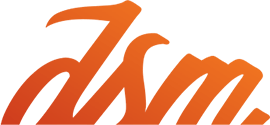 Nice try, Mavis.
Nice try, Mavis.You log onto a social media site and come across a profile that seems almost too promising. Great qualifications, well rounded and a sense of humor, can it be true?
Fake Internet profiles are so common today the term “catfish” has been coined for those who pretend to be someone they're not. But don’t fret! There are various steps one can take in determining whether or not an online social media profile is real.
How to Determine if a LinkedIn Profile is Fake
For the networking site LinkedIn, be sure to look at the user’s profile periodically to make sure they are adding information that seems believable and reliable. On LinkedIn it allows for comments from past employers to analyze the past employee's performance, so utilize those comments and get into contact with those references.
Some red flags for fake LinkedIn profiles are:
- Lower case first and last name.
- A stock photo as their profile picture.
- Minimally filled out profile with a large number of groups.
- Generic company name.
- Rhythmic names like Sam Smith, Joe Johnson, etc. (no offense to the Sam Smiths and Joe Johnsons of the world)
If you are positive a profile is fake, LinkedIn allows for you to flag a profile for spam under the public profile URL on the bottom right and from there LinkedIn will suspend the account if a substantial amount of people flag the profile.
How to Tell if a Twitter Account is Fake
Now I know you’re thinking, “I know how to do a basic Google search, thanks.” However, this statistic will make you think twice: According to The Daily Mail, of President Obama's 36.9 million Twitter followers, an astonishing 53 percent – or roughly 19.5 million – are fake accounts.
In order to spot a fake account look out for:
- Eggheads: The default Twitter picture is a literal egghead, and although each egghead may not be fake, it can be the sign of a fake profile.
- Stock photos: Like I noted for LinkedIn, fake profiles use images that have been added by others. In order to find out if it is a stock image, click on the profile image, copy the link location and go to Google images and search the URL. If it's fake, you'll see the same picture popping up all over the Internet.
- Non-existent bio: A bio allows for a person to boast about themselves; skipping over this is not only a sign of laziness, but also that it is fake.
- No friends: No or low followers usually is a good indication an account is fake
How to Tell if a Facebook Account is Fake
Now here’s my favorite, the fake Facebook profiles. I personally think that detecting these fake accounts are the easiest for several reasons:
- Friends: Facebook is the largest social media site, so if the person doesn't have any friends, it's a fake account.
- Pictures: If there aren't any pictures of themselves or family, chances are its fake.
- Look at their wall: If their timeline doesn't contain any comments from friends, only the users Facebook status’ and pictures they uploaded themselves, don't bother.
- No website design: Facebook is all about presenting yourself and personalizing your page. If there is no personality to the page, don't fall for it.
According to Facebook itself, 83 million Facebook accounts, or 5 to 6 percent of accounts, are fake. That is more than the total amount of people residing in France and the Netherlands combined.
New forms of social media are always being put out onto the market therefore more people will find ways to create fake profiles. Do not become a victim of the catfish epidemic. Watch who you connect with on LinkedIn, who you follow on Twitter and who you add on Facebook, a fake profile could end up swindling you out of your hard earned money.
Have any tips you'd like to share with our readers? Let us know in the comments.
